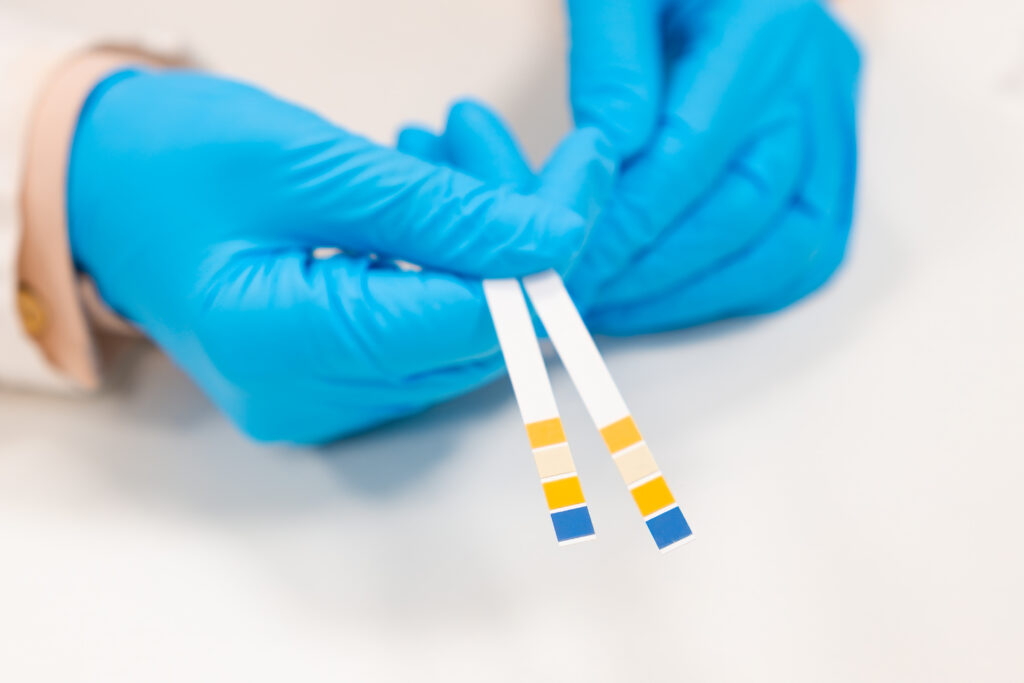In an era where the opioid crisis has claimed countless lives, the emergence of fentanyl test strips has become vital for harm reduction. These small but powerful tools can detect the presence of fentanyl, a potent synthetic opioid, in drugs, offering a practical solution to a growing problem. By providing a quick and easy method to test substances for fentanyl, these strips empower individuals to make informed decisions, potentially saving lives by preventing accidental overdoses.
As we delve deeper into understanding what fentanyl test strips are, it’s clear their significance extends beyond mere detection; they are an essential part of a broader strategy aimed at combating the current opioid epidemic. This introduction seeks to shed light on the mechanics, legal status, and effectiveness of fentanyl test strips, illustrating their critical role in the ongoing battle against opioid-related fatalities.
The widespread adoption and accessibility of fentanyl test strips could mark a turning point in harm reduction efforts, highlighting the importance of innovative solutions in addressing public health crises.
Understanding Fentanyl
Fentanyl, a synthetic opioid, surpasses morphine’s potency by 50-100 times, presenting a formidable challenge in the battle against opioid misuse. Initially crafted for managing pain in cancer patients, its illicit integration into street drugs has precipitated an alarming increase in overdose fatalities.
The critical understanding of its potency and widespread presence lays the groundwork for appreciating the indispensable role of fentanyl test strips. These innovative harm reduction tools are pivotal in today’s society, offering a practical measure to mitigate the risks associated with fentanyl-contaminated substances and safeguard communities from the dire consequences of opioid addiction.
The Functionality of Fentanyl Test Strips
Fentanyl test strips work by detecting the presence of fentanyl and its analogs in a variety of substances, serving as a critical frontline tool in the battle against the opioid epidemic. The simplicity of their use – involving dipping the strip into a solution of the substance – belies the complex chemistry that allows them to provide life-saving information within minutes.
By offering a quick and accessible means to identify potentially lethal doses of fentanyl, these strips have become indispensable in harm reduction efforts. As overdose rates continue to climb, the importance of fentanyl test strips in preventing deaths and promoting safer drug use practices cannot be overstated, highlighting their invaluable role in public health initiatives.
Legal Status and Availability
The legal status of fentanyl test strips varies by country and, in some cases, by state or region, reflecting the complexities of global and local drug policies. This section delves into the laws governing their use and discusses how they are distributed and accessed by those who need them most.
As debates around their legality continue, it’s clear that making fentanyl test strips widely available could play a significant role in the harm reduction toolkit, offering a pragmatic approach to saving lives amidst the opioid crisis. Advocates argue for a reevaluation of existing laws to prioritize public health and safety, suggesting that legal access to fentanyl test strips could be a critical step in combating the devastating effects of fentanyl-related overdoses.
This dialogue highlights the importance of policy in shaping the accessibility of essential tools like fentanyl test strips in the broader fight against opioid addiction and mortality.
Effectiveness of Fentanyl Test Strips
Fentanyl test strips have emerged as a vital component in the arsenal against the opioid epidemic, showcasing both accuracy and reliability in studies. These strips have proven to be an effective harm reduction tool, pivotal in enhancing drug safety protocols and significantly lowering overdose incidents. The utilization of fentanyl test strips in various settings underscores their indispensable role in public health initiatives aimed at combating the surge of opioid-related fatalities.
By providing a quick and easy method to test substances for the presence of fentanyl, these strips empower individuals to make informed decisions, potentially saving countless lives. Their integration into harm reduction strategies exemplifies a proactive approach to addressing the opioid crisis, reflecting the critical need for accessible and effective drug testing options in today’s society.
Usage Guidelines
Ensuring the correct usage of fentanyl test strips is crucial for obtaining precise and reliable outcomes. This part of the guide outlines the step-by-step process for their proper application, offering valuable tips and best practices. These guidelines are designed to maximize the effectiveness of fentanyl test strips, enhancing their role as a preventive measure in the ongoing battle against the opioid crisis.
By adhering to these instructions, users can significantly improve the accuracy of the test results, contributing to safer drug consumption practices and reducing the likelihood of fentanyl-related overdoses. The emphasis on proper usage underlines the importance of these strips not only as a tool for detection but also as an educational resource for promoting awareness and understanding of fentanyl’s dangers.
Public Opinion and Awareness
The influence of awareness campaigns and public perception significantly shapes the acceptance and utilization of fentanyl test strips. By examining the role of targeted awareness efforts, it becomes evident that educating the public about the benefits and functionalities of fentanyl test strips can foster greater acceptance and encourage their use.
Highlighting the change in public attitudes reveals the crucial link between informed communities and the successful implementation of harm reduction strategies, underscoring the importance of continued advocacy and education in promoting the widespread adoption of fentanyl test strips.
The Role of Healthcare Providers
Healthcare professionals bring a distinct viewpoint to the discussion on fentanyl test strips, emphasizing their integration into substance abuse treatments and the guidance offered to patients.
The inclusion of fentanyl test strips in treatment protocols highlights their value not only as a harm reduction tool but also as a means of fostering open, supportive dialogue between patients and healthcare professionals. This approach underscores the critical role of medical guidance in enhancing the effectiveness of fentanyl test strips, reinforcing the partnership between public health efforts and clinical practice in addressing the opioid crisis.
Alternatives and Supplementary Measures
While fentanyl test strips stand out as a crucial instrument in the harm reduction toolkit, they represent just one of many drug testing methodologies available. A comparative analysis juxtaposes fentanyl test strips with alternative drug testing techniques to illuminate their respective roles within the broader spectrum of drug safety strategies. It delves into the strengths and limitations of each method, highlighting how fentanyl test strips complement other approaches to offer a more comprehensive and multifaceted drug safety net.
Through this exploration, it becomes clear that the integration of fentanyl test strips into broader drug safety measures enhances the overall efficacy of harm reduction efforts, underscoring the importance of a diversified approach to addressing the complexities of substance abuse and the opioid crisis.
Speak To An Everlast Recovery Professional Today
Fentanyl test strips stand as a pivotal asset in the ongoing battle against the opioid epidemic, underscoring the necessity for enhanced awareness and broader access to mitigate the devastating impact of this crisis.
We reaffirm the indispensable role of fentanyl test strips in saving lives and emphasize the urgency of expanding their reach. For those affected by or vulnerable to opioid misuse, Everlast Recovery offers comprehensive support and resources tailored to individual needs. We encourage everyone to advocate for the broader availability of fentanyl test strips and to consider Everlast Recovery as a partner in navigating the path to wellness.
We can amplify the harm reduction message and take meaningful steps toward a safer future. Reach out to Everlast Recovery for guidance and support and to join us in this crucial effort. Let’s make a concerted push for increased accessibility to fentanyl test strips and commit to the broader mission of ending the opioid crisis.
FAQs
How accurate are fentanyl test strips?
Fentanyl test strips are highly accurate when used correctly. They are designed to detect the presence of fentanyl and many of its analogs in various substances. While no test can guarantee 100% accuracy due to the potential for very low levels of fentanyl that might not be detected, studies have shown that these strips have a high sensitivity for detecting fentanyl, making them a reliable tool for harm reduction.
Can fentanyl test strips detect all types of fentanyl?
Fentanyl test strips are designed to detect fentanyl and several of its analogs. However, due to the constant emergence of new synthetic opioids, there may be some fentanyl analogs that the strips cannot detect. Despite this limitation, they are still an effective means of reducing the risk of fentanyl-related overdoses by identifying the presence of the most commonly encountered forms of the drug.
Are fentanyl test strips legal to possess and use?
The legality of fentanyl test strips varies by location. In some areas, they are considered legal and are recognized as a harm reduction tool. However, in other places, they may fall under paraphernalia laws that make possessing them illegal. It’s essential to check the specific laws in your jurisdiction. Increasingly, regions are changing their laws to legalize the possession and use of fentanyl test strips in response to the opioid crisis.
How do you use fentanyl test strips?
To use a fentanyl test strip, follow these general steps:
- Dissolve a small amount of the substance in water.
- Dip the test strip into the solution for a few seconds, ensuring the strip does not touch the container’s bottom.
- Lay the strip flat on a clean surface and wait for the results to appear, typically within a few minutes.
The presence of a single line indicates a positive result for fentanyl, whereas two lines indicate a negative result. Instructions may vary slightly, so reading the specific guidelines provided with the test strips is essential.
Can using fentanyl test strips encourage drug use?
There is no evidence to suggest that the availability of fentanyl test strips encourages drug use. Instead, they are a harm reduction tool that provides individuals with critical information that could save their lives by alerting them to the presence of fentanyl in substances. They are part of a comprehensive approach to addressing the opioid crisis, focusing on saving lives and reducing harm rather than promoting drug use.





